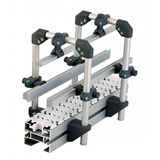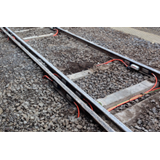It was launched today by the State Government on the University's Melbourne campus.
Vice-Chancellor, Professor Paul Johnson said La Trobe was extremely enthusiastic in its support for this project. "The outcome promises to benefit greatly driving safety in Australia, with the added potential of being able to export leading-edge Australian technology design and expertise," he said.
The project is headed by Professor Jugdutt (Jack) Singh, Director of the Centre for Technology Infusion. He says the venture is at the fore-front of a global move to 'intelligent' transport systems and 'smart cars' of the future.
It involves dedicated mobile-phone-style wireless networks, integrated with GPS. These will run on an international standard of 5.9 gigaherz.
Professor Singh expects new vehicles will be able to adopt the technology once this spectrum is allocated in Australia. It can also be retrofitted to cars already on the road.
There are about nine and a half thousand level crossings on Australian public roads. About 2,000 are in Victoria.
Professor Singh says drivers make a staggering number of decisions, often in split seconds, so project design also includes University psychologists for human factors research.
Department of Transport Senior Manager Railway Crossing Safety, Mr Terry Spicer, says the partnership with La Trobe is helping meet recommendations made by the Parliamentary Road safety Committee inquiry into improving level crossings.
"This technology has the potential to significantly reduce and ultimately eliminate collisions, injuries and fatalities at level crossings," Mr Spicer said.
The La Trobe Centre for Technology Infusion has an international reputation for leading-edge R&D in micro-technology, nano-electronics, wireless systems and sensors.
Professor Singh says traditional sensors, like radar, have limitations for advanced transport management systems. They have a directional field of view and can not see very far into cross roads; and they are very expensive.
"By using the latest in wireless technology we can create 360 degree driver awareness over a longer range at far cheaper costs – and at vehicle speeds of up to 200 kilometres per hour."
International developments
In May, La Trobe University and the Australian AutoCRC signed a $260,000 agreement for research and training in advanced automotive technology and transport engineering with two of China's leading universities – Tongji University in Shanghai and Tsinghua University in Beijing.
Deputy Vice-Chancellor (Research), Professor Tim Brown, says Intelligent Transport Systems are a high priority world wide. Estimates are that by 2015 these systems could lead to cost savings of more than 40 per cent by reducing accidents and travel time. They will also cut emission, fuel and vehicle operating costs.
These two agreements, says Professor Brown, are also the first step in plans for closer research collaboration with Australian and Chinese universities and automotive companies. "The Chinese automotive industry is expanding rapidly and seeking new technology to underpin its growth and boost exports for its products."




